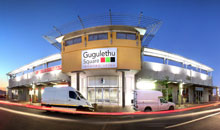
In today's competing market, most brands are under pressure to grow and expand. South Africa's economy has lagged since 2007 and marketers are looking for new areas to extend their distribution network. Africa has been the obvious market for SA retailers and manufacturers that hold massive growth potential but domestically South Africa's townships remain the 'no brainer' for local growth. Many marketers prefer to throw this market into one generic segment but the Roots survey shows key differences in these hotspots and warns marketers from 'boxing' these important markets into one group.
"Roots 2013 has most of South Africa's biggest townships and markets covered," says John Bowles, NAB's Joint MD. "This year the survey conducted 7500 interviews in over 25 of the top townships and over 11,000 interviews in the LSM 4 to 7 group. These markets account for R6.5 billion per month in household income but differ significantly in demographics and shopping behaviour area by area."
Since 2007, there has been a significant change in some of these key townships most notably with movement in the LSMs. The survey saw an 80% jump out of LSM 3-5 into the 6-8 groups, as urbanisation and asset accumulation forged ahead. This emergence and substantial growth of the South Africa's black middle class showed an increase of over 40% in the average household income in the same key townships - surpassing CPI inflation over the same period.
"However, averages can be misleading and miss the real picture. The real insights come by zooming in to local micro communities where one has the ability to analyse individual townships separately, making the data highly relevant for businesses wanting to open stores or simply build their distribution network."
For example, in Soweto 62% of households have three or more adults (classified as 16+) living in the household versus Umlazi at 43%. Umlazi are heavily dependent on single income contributions to that of Soweto's households.
The survey allows for detailed interpretation by breaking down a large township such as Soweto even further. Soweto as a whole has an average household income of R7 182 but that 'average' differs significantly within the townships suburbs where stores and brands are available on the ground.
Orlando, for instance, has an average household income of R5 929 while Protea (a growing and young community) has the highest household income at R11 398. Pimville has grown its household income by 86% since 2010 - one of the contributors to the significant growth in this area can be attributed to Maponya Mall and the upgrades in that suburb. And even Zola that has a below average income is important for business- making up 20% of households in Soweto and a close 19% in household income contribution.
One of the most relevant insights within the main survey data is that shoppers do not travel too far to shop. Given the amount of retail space saturating markets and the increase in the fuel price, buyers are shopping locally. 93% of all buyers interviewed will not travel further than 30 minutes for food and groceries and close on 70% are unlikely to pass the 15-minute radius.
In South Africa's townships where less choice and products are available to that of established areas, shoppers must travel further for their retail therapy. This has led to the emergence of world class malls like that of Maponya Mall providing shoppers with more choice and access to superb facilities. 98% of buyers in Pimville have visited Maponya Mall in the past three months. In line with similar fundamentals elsewhere, this has attracted large numbers of people from other areas within Soweto, changing their behaviour from before these major malls were developed.
The survey is particularly valuable to identifying where a specific market is shopping. In the food and groceries segment, Shoprite is particularly dominant but there are some interesting fights on the ground for share of mind. In Diepkloof, Pick n Pay has become a key player for shoppers as well as for Cambridge - that launched in 2011. It seems as soon as new players enter the market offering good price and value, shoppers start to consider and visit these stores.
"What the survey makes clear is that township by township, area by area, everything changes. Shopper's shop where they want and as new malls open, catchment areas shrink and buyers have more choice. For business, townships are an avenue for new growth but it is important to avoid wrapping the township market into one generalised segment - these key areas differ considerably. Rather, marketers and retailers should always be aware of the different dynamics at play at a local level," concludes Bowles.